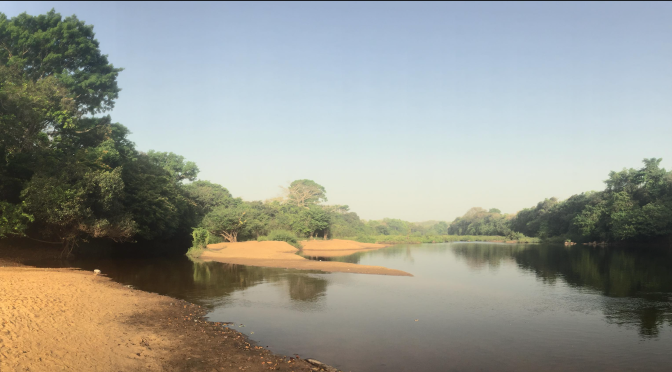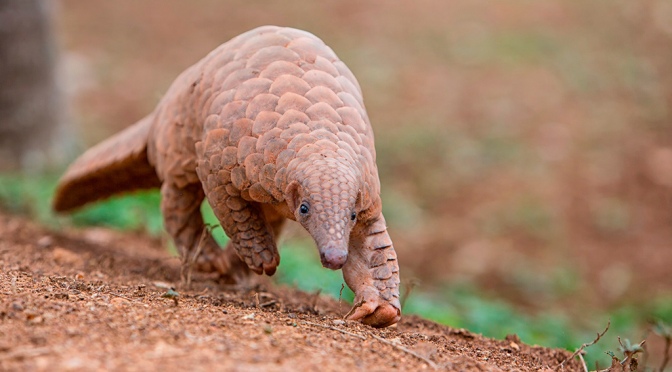It’s the beginning of a great, big, new, adventure and where better to write about it than here, the place I started my journey. Well, I didn’t quite literally begin life on this website, but Endangered Living has been there for me as an outlet, a place to share, and a community of support over the last several years. So it’s fitting that I get to share with you my latest endeavor: The Pan Verus Project
All posts by Sarah Bell
National Parks and Civil Wars
Outamba Kilimi National Park is Sierra Leone’s first national park, and in located in the far north of the country along the Guinean border. The national park is comprised of two non-contiguous areas, Outamba (183,100 acres) and Kilimi (90,900 acres). These protected areas lie at an important transition zone in Sierra Leone’s landscape, where the Upper Guinean Rainforest Ecosystem begins to transition into savanna and open woodland. Continue reading National Parks and Civil Wars
New species of orangutan found (and there’s a super volcano involved)
Today marks the first time in almost two decades that new species of great ape was discovered. Scientists have found an isolated population of orangutans in Sumatra, Indonesia, and studies show that it is a new species, and that it has been separated from the other population of Sumatran orangutans for over a million years.
Continue reading New species of orangutan found (and there’s a super volcano involved)
The Birds of Bali
The Indonesian island famous with tourists for its beaches, yoga retreats, and waterfalls is currently under threat from one of the island’s active volcano, Mount Agung. While the volcano has not erupted in over 50 years, experts now say that eruption is imminent and the government has evacuated a 12km radius around the volcano. Continue reading The Birds of Bali
How wild chimpanzees can help negate climate change
Happy Earth Day! Today, I am going out to the National Mall in Washington DC to March for Science! Why do I march? Because of our planet’s species are under attack, not only by global problems like the illegal wildlife trade, unsustainable agriculture, and climate change, but by the policy makers in our own back yard.

Continue reading How wild chimpanzees can help negate climate change
Political Change & Climate Change
2015 was the year that over 150 Heads of State and Government, like Vladimir Putin and Barack Obama, attended the Paris Climate Summit where negotiations were held and a Climate Change Accord was signed by representatives of 185 nations. Continue reading Political Change & Climate Change
A Win for the Pangolin
The pangolin, of which there are 8 species, is a strange creature that looks like a cross between a reptile and an anteater. In fact, this mammal can climb trees, has a long tongue for finding insects, is covered in keratin scales, can spray foul smelling liquid like a skunk, and are highly endangered (ranging from vulnerable to critically endangered).

Artist turned Curiosity Correspondent
Recently, I’ve had an incredible obsession with Emily Graslie and her YouTube series, The Brain Scoop. Graslie is a fantastic science communicator and you can tell that she is passionate and that she really knows her stuff, and when she doesn’t, her curiosity for the topic shines through.

Secret Saola
Along the Laotian and Vietnamese border lives a small forest ox. This creature was only discovered in 1992 and has since only been seen a small number of times. Despite being a new-to-us species, it’s already under threat. This Odd Animal Profile is about the Saola (Pseudoryx nghetinhensis), which is already listed as critically endangered due to habitat loss and hunting. What can we learn about this fascinating animal before it’s too late?

Chimpanzees and the New York Blood Center
In March of 2015, during the height of the Ebola crisis, the New York Blood Center(NYBC), a U.S. based research institution, stopped paying for the care of over 60 of its chimpanzees. These chimps which were used in hepatitis research at a center in Liberia, were then left on islands to live out their lives. The research project they were used in was created and funded by the NYBC in partnership with the Government of Liberia.












